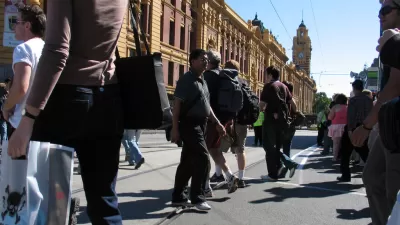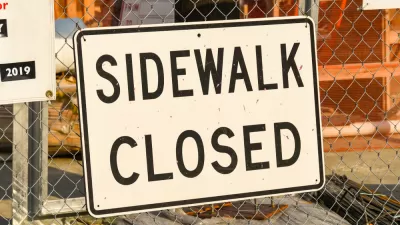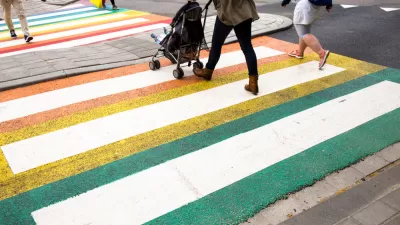A post on Ars Technica digs into the complicated world of pedestrian modeling and identifies a culprit in the problems with existing models: indecisive people.

Chris Lee introduces the research of Alessandro Corbetta, from the Technical University of Eindhoven, into the difficulties of creating reliable models for pedestrian behavior.
The problem:
Unfortunately, pedestrian models are not very well tested against data. Most experiments involve paying university students to walk along corridors and through doors under highly artificial conditions. In part, this is because it has been very difficult to obtain data from natural settings, where you need to track individual pedestrians as they walk through some area of interest.
The solution:
Corbetta set [Kinect] cameras up in two locations: the main thoroughfare at Eindhoven train station and a link corridor between one of the university buildings and the nearest cafeteria. From there, he recorded data for a year.
Corbetta's findings after crunching the quarter of a million trajectories he discovered during the experiment revealed some of the behavior that makes pedestrian modeling so difficult. Namely, that some people change their minds en route, and turn around. The article goes into more detail about how Corbetta accounted for their indecision for the ongoing project of building reliable pedestrian models.
FULL STORY: Models of pedestrian flow stumble because people change their minds

Alabama: Trump Terminates Settlements for Black Communities Harmed By Raw Sewage
Trump deemed the landmark civil rights agreement “illegal DEI and environmental justice policy.”

Study: Maui’s Plan to Convert Vacation Rentals to Long-Term Housing Could Cause Nearly $1 Billion Economic Loss
The plan would reduce visitor accommodation by 25% resulting in 1,900 jobs lost.

Why Should We Subsidize Public Transportation?
Many public transit agencies face financial stress due to rising costs, declining fare revenue, and declining subsidies. Transit advocates must provide a strong business case for increasing public transit funding.

Paris Bike Boom Leads to Steep Drop in Air Pollution
The French city’s air quality has improved dramatically in the past 20 years, coinciding with a growth in cycling.

Why Housing Costs More to Build in California Than in Texas
Hard costs like labor and materials combined with ‘soft’ costs such as permitting make building in the San Francisco Bay Area almost three times as costly as in Texas cities.

San Diego County Sees a Rise in Urban Coyotes
San Diego County experiences a rise in urban coyotes, as sightings become prevalent throughout its urban neighbourhoods and surrounding areas.
Urban Design for Planners 1: Software Tools
This six-course series explores essential urban design concepts using open source software and equips planners with the tools they need to participate fully in the urban design process.
Planning for Universal Design
Learn the tools for implementing Universal Design in planning regulations.
Smith Gee Studio
Alamo Area Metropolitan Planning Organization
City of Santa Clarita
Institute for Housing and Urban Development Studies (IHS)
City of Grandview
Harvard GSD Executive Education
Toledo-Lucas County Plan Commissions
Salt Lake City
NYU Wagner Graduate School of Public Service





























